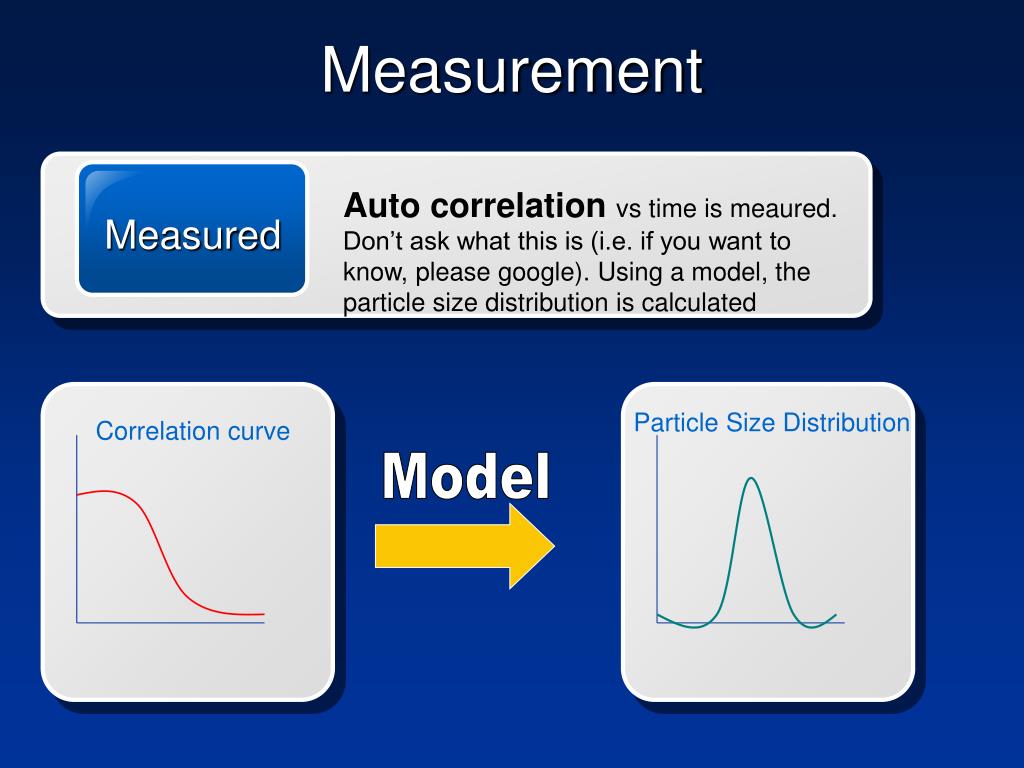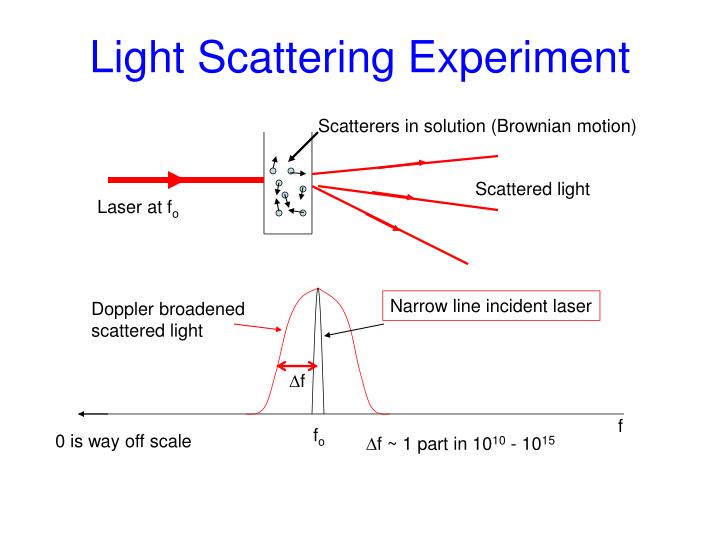

The second order autocorrelation curve is generated from the intensity trace as follows: The dynamic information of the particles is derived from the autocorrelation of the intensity trace recorded during the experiment. Sample preparation either by filtration or centrifugation is critical to remove dust and artifacts from the solution. This scattered light then undergoes either constructive or destructive interference by the surrounding particles, and within this intensity fluctuation, information is contained about the time scale of movement of the scatterers. This fluctuation is due to small particles in suspension undergoing Brownian motion, and so the distance between the scatterers in the solution is constantly changing with time. Even if the light source is a laser, and thus is monochromatic and coherent, the scattering intensity fluctuates over time.

When light hits small particles, the light scatters in all directions ( Rayleigh scattering) as long as the particles are small compared to the wavelength (below 250 nm). In vertical/horizontal (VH) geometry the second polarizer allows light that is not in the same direction as the incident light. One is a vertical/vertical (VV) geometry, where the second polarizer allows light through that is in the same direction as the primary polarizer. The polarizers can be set up in two geometrical configurations. This process is repeated at short time intervals and the resulting set of speckle patterns is analyzed by an autocorrelator that compares the intensity of light at each spot over time. The diffracted light from all of the molecules can either interfere constructively (light regions) or destructively (dark regions). DLS can also be used to probe the behavior of complex fluids such as concentrated polymer solutions.Īll of the molecules in the solution are being hit with the light and all of the molecules diffract the light in all directions. It has been shown that the intensity ACF is the Fourier transform of the power spectrum, and therefore the DLS measurements can be equally well performed in the spectral domain. In the time domain analysis, the autocorrelation function (ACF) usually decays starting from zero delay time, and faster dynamics due to smaller particles lead to faster decorrelation of scattered intensity trace. In the scope of DLS, temporal fluctuations are usually analyzed using the intensity or photon auto-correlation function (also known as photon correlation spectroscopy or quasi-elastic light scattering).

Hypothetical dynamic light scattering of two samples: Larger particles on the top and smaller particles on the bottomĭynamic light scattering ( DLS) is a technique in physics that can be used to determine the size distribution profile of small particles in suspension or polymers in solution.


 0 kommentar(er)
0 kommentar(er)
